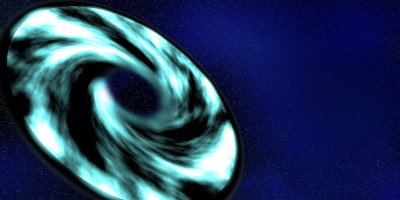
Physicists at Laser Interferometer Gravitational-Wave Observatory announced Thursday that they had directly detected gravitational waves for the first time, sending cheers throughout the scientific and non-scientific community alike. The detection of these waves confirmed Einstein’s theory of general relativity, which he predicted approximately 100 years ago in 1915. This discovery will open opportunities for further research and enhance scientists’ understanding of space and time.
The LIGO Scientific Collaboration is a group of scientists who work to detect gravitational waves and use them as a means to advance astronomical discovery. Founded in 1997, it includes more than 1,000 scientists from various institutions and universities worldwide. LIGO, funded by the National Science Foundation, is composed of two detectors in Hanford, Washington and Livingston, Louisiana.
“My LIGO colleagues and I are very happy to see the enormous interest of the public in our work,” Marco Cavaglia, LIGO Scientific Collaboration assistant spokesperson and associate professor at The University of Mississippi, wrote in an email. “It’s thrilling to see so many people interested in science. It’s really gratifying to us.”
“It seems like it made a splash,” said Daniel Hoak, a researcher at LIGO and a 2002 graduate of Boston University’s College of Arts and Sciences. “Studying gravitational waves is not going to cure any diseases. It’s not going to really make anybody’s lives directly better … We always like to joke around the lab that studying gravitational waves is mainly to make people happy, and finally, it kind of feels like it might be true.”
Hoak further explained how LIGO detectors were able to sense the gravitational waves. The detectors used a laser to measure the distance between two mirrors that were four kilometers apart. The laser light recorded the signal of a passing gravitational wave and converted this into a digital signal that could be analyzed with computers.
“The theory describes how any massive object bends space around it, and the force of gravity manifests itself by the property that when you’re traveling through space, objects tend to take the shortest path between two points,” Hoak said. “Gravity changes the shape of space so that the shortest path tends to be towards a massive object. Gravitational waves are traveling perturbations in space time … The LIGO detectors are meant to measure any tiny changes in the space time around the detectors.”
These gravitational waves were a result of a binary black hole collision, in which two black holes that had been orbiting each other for billions of years steadily moved closer and finally merged in a final cataclysmic event. Consequently, energy was released in the form of gravitational waves. They reached Earth 1.3 billion years after the event, stretching and compressing space as they passed. These gravitational waves were so hard to detect that even Einstein doubted scientists would ever be able to pinpoint them.
However, John Stachel, a Boston University professor and director of Einstein studies in CAS, said he wasn’t shocked at the finding.
“I wasn’t terribly surprised, actually,” he said. “This has been a long process. People talk as if it were just the theory of general relativity, but it’s not really a single theory, it’s a part of research program that Einstein started … He and many others after him have been trying to develop this program, and one of its aspects is gravitational waves.”
Just as it has been a long process to get to this discovery, Stachel said it will be a long process moving forward.
“We are just at the beginning of the beginning of this search because all we’ve detected is the gravitational analog of a bit of sunlight, but we haven’t probed the structure of this gravitational radiation,” Stachel said. “All we’ve seen is some sort of little blip.”
Hoak said the detection of these waves is the first step to a new understanding of the universe, comparing the two discoveries as capstones of each one’s respective theory.
“We’re going to keep detecting systems like this. We’re going to detect more and more of them as the instruments are improved over time,” he said. “We’re going to learn more about neutron stars. We’re going to learn more about black holes and hopefully really strange things that we haven’t thought of before.”
The detection of these gravitational waves is now a path for scientists to understand Einstein’s theory in more detail.
“You can never ‘prove’ a theory. Every theory has its limits and one of the reasons for testing the predictions of this theory is to find it’s limits,” Stachel said. “Science is an unending quest … We should always be prepared for new knowledge, improvements of our knowledge or even to learn that some of the things we thought we knew are not correct. That’s part of the beauty and fascination of science.”
A previous version of this story described Marco Cavaglia as LIGO Scientific Collaboration spokesperson and professor at The University of Mississippi rather than asassistant spokesperson and associate professor. This correction is reflected in the story above.




